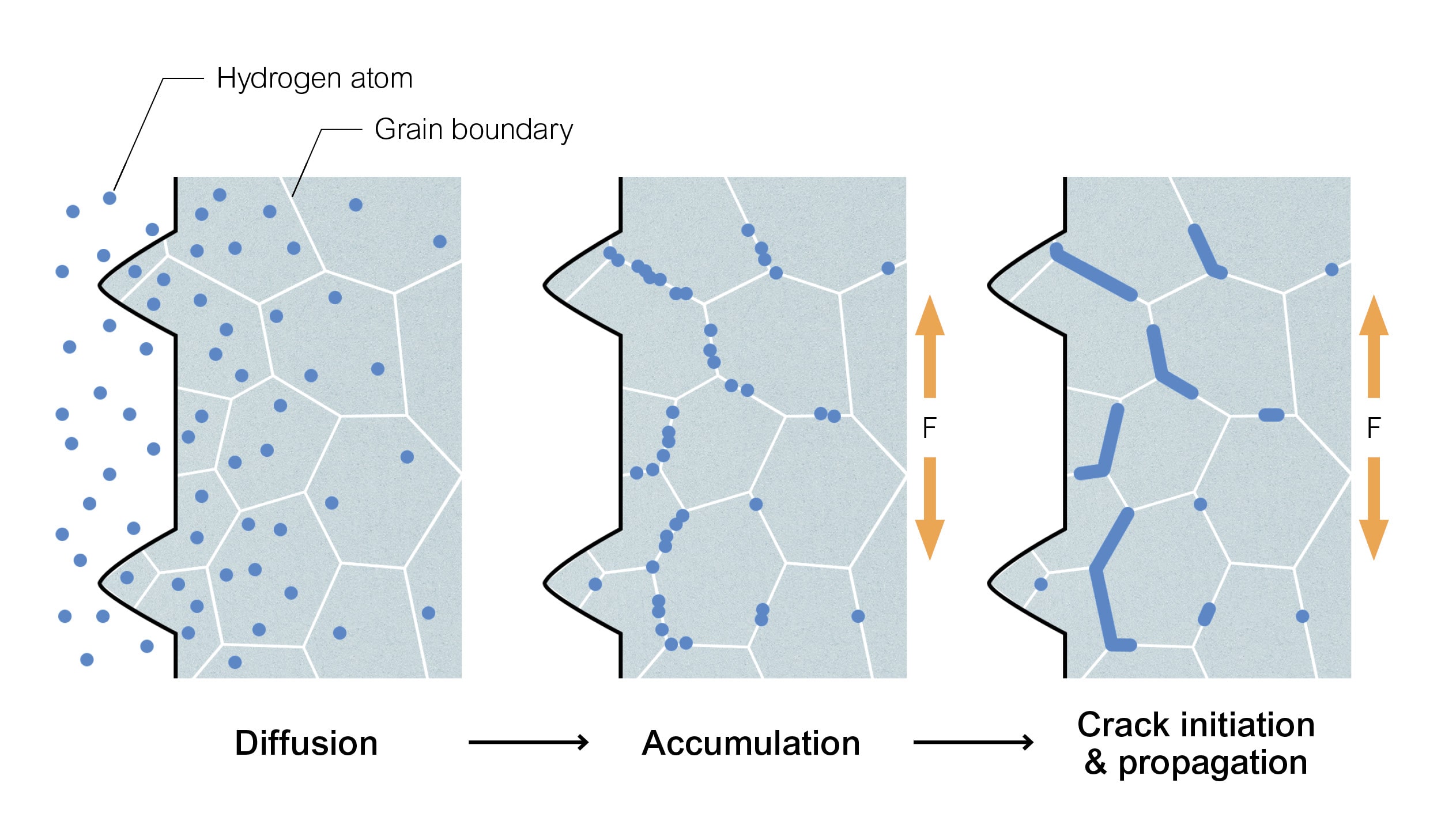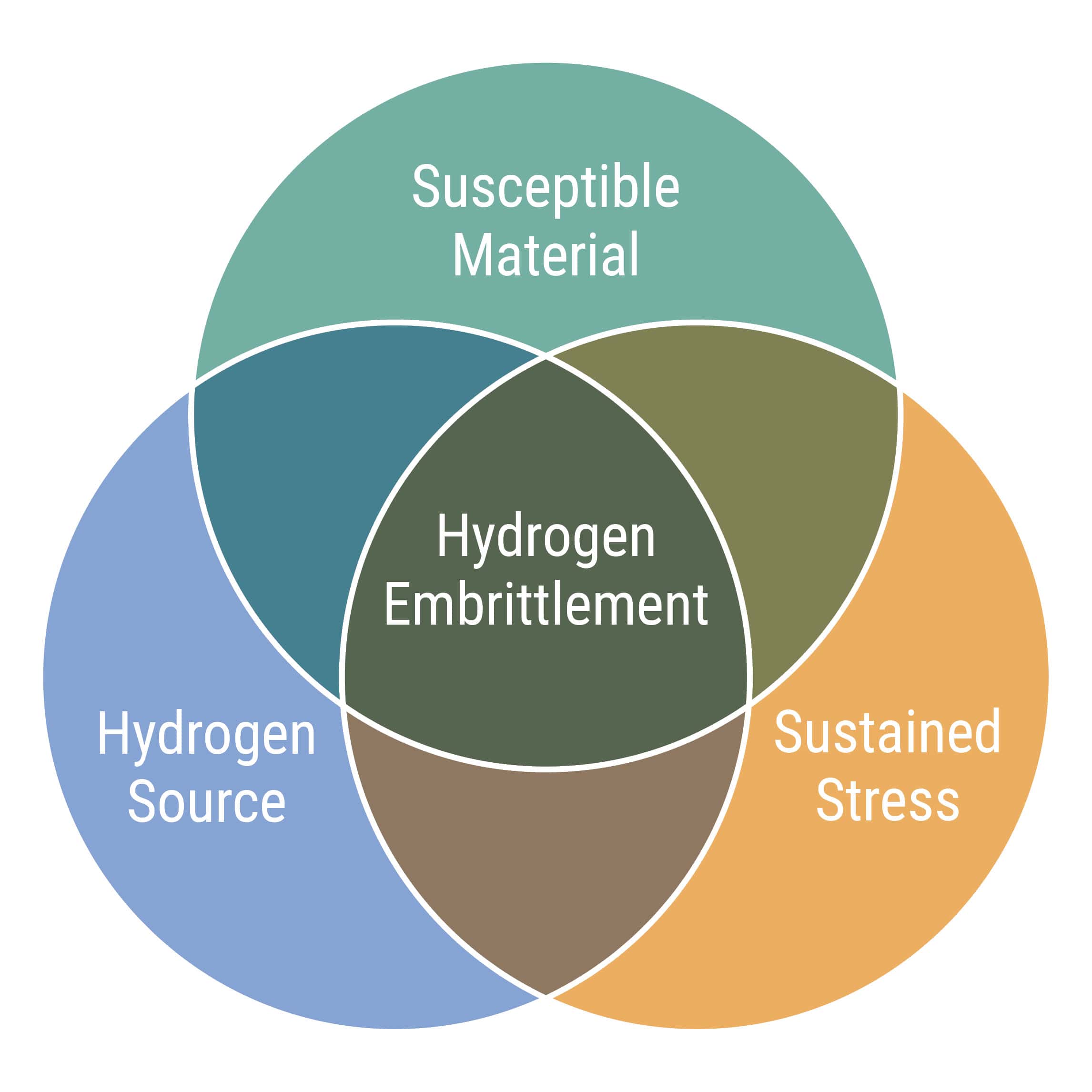Hydrogen Embrittlement (HE) of metallic hardware and connectors in the mass timber industry has become a discussion topic and a major point of consideration for specifiers and structural designers in recent years. A wide variety of factors can contribute to stress failure caused by HE, which can be generally categorized into two main types:
In this article, we focus on EHE: what it is, how it affects mass timber screws, how it may occur, and what measures can be taken to prevent it.
Approximately 5-minute reading time.
What is Hydrogen Embrittlement (HE)
Hydrogen embrittlement (HE) is a phenomenon where a susceptible metallic material becomes brittle under sustained stress in the presence of hydrogen. This process can lead to sudden failure, often occurring at stress levels significantly below the material’s ultimate tensile strength.
Here’s the science in a nutshell: First, hydrogen diffuses into the metal’s microstructure. This can occur before or after the metal has been stressed. As stress is maintained, hydrogen migrates to stress concentrations, creating internal pressure while inhibiting dislocation mobility. This can lead to crack initiation and propagation, ultimately leading to unexpected failure.

Figure 1. Mechanism of hydrogen embrittlement in mass timber screws, shown in a longitudinal cross-section (not to scale)
How Does HE Affect Mass Timber Screws
Evidently, HE can have serious consequences for mass timber screws by stripping away their ductility, which is crucial for tensioned connections and reliable failure modes. So, how does it happen, and more importantly, how can you prevent it?

Figure 2. Principal factors contributing to hydrogen embrittlement
For HE to occur in screws, three key factors need to line up:
IHE happens when hydrogen gets into the metal during manufacturing processes like steelmaking, pickling, or electroplating. This introduction of hydrogen occurs before the screw is stressed. For now, let’s focus on EHE, which happens when hydrogen enters the metal while the screw is under stress during service, but you can read more on IHE over here.
Environmental Sources of Hydrogen
Corrosion
Corrosion is one of the main causes when it comes to environmental hydrogen sources for screws. A reaction occurs when the base metal of the screw and its zinc coating, especially where there may be surface defects, come in contact with water. This generates hydrogen at the base metal surface, which can subsequently diffuse into the metal’s microstructure.
Acid Washes
Another potential source is acid washes. These hydrogen-rich solutions are often used to clean rust from steel components, but they can introduce hydrogen into the screws connecting steel and wood elements.
Preventive Measures
Out of the three factors that contribute to HE, managing stress in real-world scenarios can be challenging. This leaves us with controlling the hydrogen source and choosing the right screw material as our best lines of defense. In many cases, effective waterproofing and humidity control can help keep hydrogen at bay.
When it comes to selecting the screw material, there are two key strategies:
Choose the Right Screws for the Job

Figure 3. Selecting proper screw materials based on expected service conditions
Follow guidelines from standards such as CSA O86:24 when selecting screws for your connections. For applications in wet service conditions, choose stainless steel (A2 or 304) screws for their corrosion resistance, making them less susceptible to HE.
Use Lower-Hardness Screws

Figure 4. Selecting screws with appropriate core hardness based on expected service conditions (note: in Vickers hardness testing, indent size is proportional to hardness under a constant test load)
Referencing ISO 2702, CSA O86:24 provides the following recommendations for screw hardness:
In general, screws with a core hardness lower than 390 HV have been found experimentally to have a low enough susceptibility to HE, which limits the concern for HE failure.
Delivering reliable solutions that comply with the latest design codes and standards in North America is at the core of MTC Solutions’ business model. This is why we have recently established an internal Quality Control service, which plays a key role in managing potential issues. If you’re interested in how we ensure top-quality hardware, don’t miss our next blog post release about it!
As always, our Technical Support Team is here to answer any questions you might have. 😉
Register for a Technical Learning Session
Sign up for MTC Newsletter and keep up to date with all our progress.